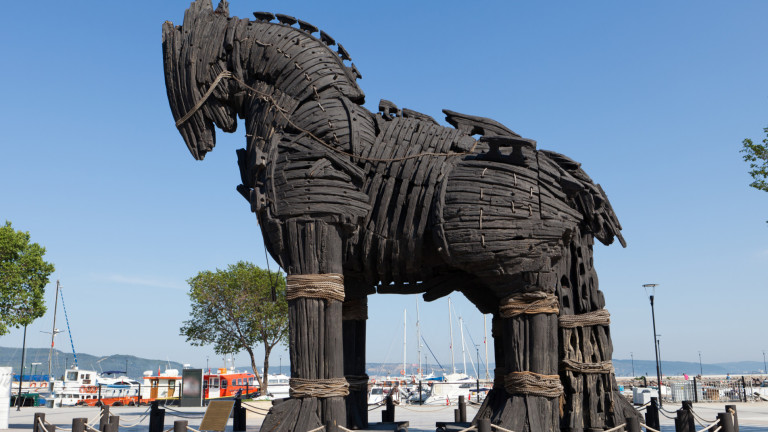Archaeologists in Turkey say they have found the remains of a Trojan horse during excavations in the historic city of Troy on the Hissarlak hills. There they found a large wooden structure. Historians and archaeologists believe that what they found are the remains of the real legendary Trojan horse, reports “Greek Reporter”.
The excavations revealed dozens of fir boards and beams up to 15 meters long. The remains are in a strange shape, which leads experts to believe that they are from the Trojan horse. The wooden structure was found behind the protective walls of the ancient city of Troy.
Most people believe that the Trojan horse is a mythical structure, usually associated with the epics of Homer’s Iliad and Odyssey.
The classic verses tell the story of the Trojan War and Odysseus’ long journey back to Ithaca, but curiously, they do not represent the iconic wooden horse. In fact, the Iliad ended just before the end of the war.
The story of the Trojan Horse is at the very end of the war, as it is used as a strategy to capture Troy and win the war. The story of the Trojan horse is most clearly presented in Virgil’s Aeneid, a Latin text from the 1st century BC. from the time of the reign of Augustus in Rome. Historians suggest that the ancient writer used the image of the horse as an analogy for a war machine or perhaps even a natural disaster.
The structure found corresponds to the description of Virgil, Augustus and Quintus Smyrnaeus, so archaeologists believe that the discovery is indeed the remnants of the Greek strategy for the conquest of ancient Troy.
Another discovery that supports archaeologists’ claims is a damaged bronze plaque reading “Greeks dedicate this offering to Athens to return home.”
Quintus Smirneus refers to the specific slab in his epic poem “Postomerica”, already found at the site of archaeological excavations.
The two archaeologists leading the excavations, Boston University professors Christine Morris and Chris Wilson, say they are very confident that the structure is indeed linked to the legendary horse. They say that all the tests done so far have only confirmed their theory.
“Carbon dating tests and other analyzes show that the pieces of wood and other artifacts date back to the 12th or 11th century BC,” says Professor Morris.
“This coincides with the dates quoted for the Trojan War by many ancient historians such as Eratosthenes or Proclus. The assembly of the find also corresponds to the description made by many sources. I do not want to sound overconfident, but I am almost certain we have found the real one.”











